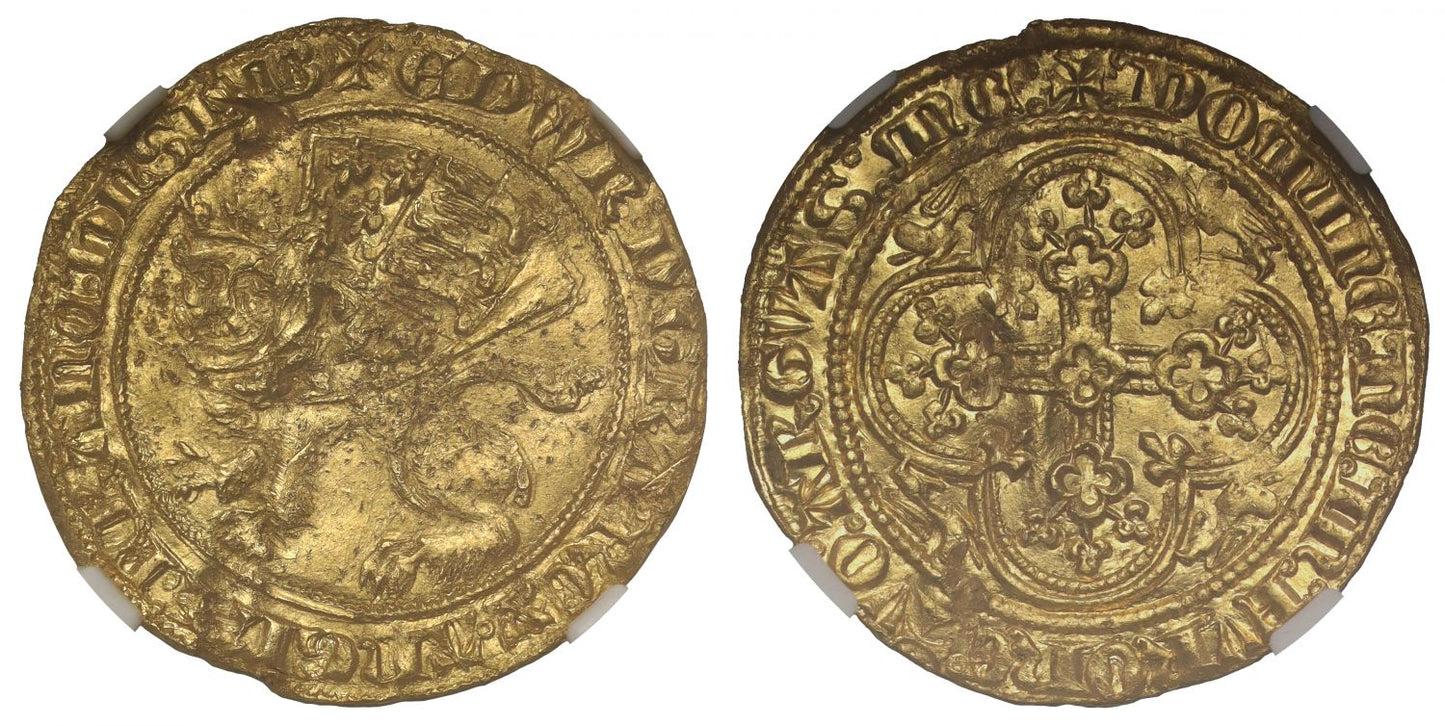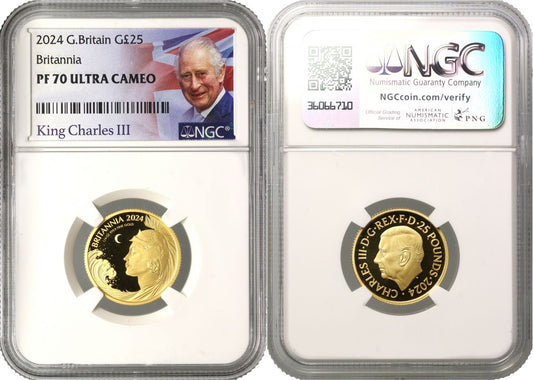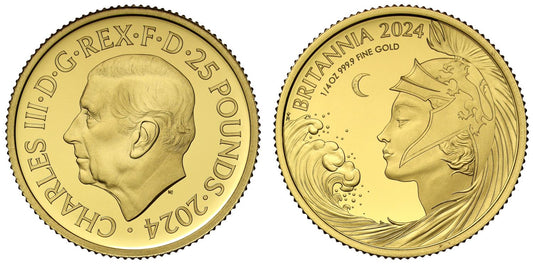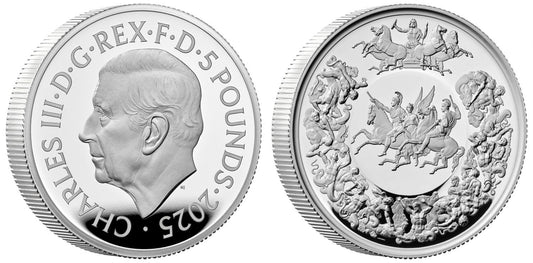FAQs
What makes a coin valuable?
I have coins to sell, what’s the next step?
How will my purchases be shipped?
What happens if I’m not entirely happy with my purchase?
Edward III gold Leopard Florin, 1st period of 3rd coinage, finest a collector can own
Edward III (1327-77), gold Leopard or Florin of Three Shillings, first gold issue of reign in the Third Coinage (1344-51), First Period (1344), crowned leopard sejant left with flowing emblematic mantle quartered with heraldic arms of France and England, all within beaded circle, legend with annulet stops and outer beaded circle surrounding, +EDWR: D: GRA: REXo AnGL Z: FRAnC DnS hIB, rev. pellet within voided quatrefoil at centre of cross, with voided quatrefoil at end of each arm sprouting three trefoils each, within larger quatrefoil shaped double tressure, leopards in spandrels, fleur de lis on each cusp, beaded inner and outer circles with legend and annulet stops surrounding, +:DOmInE: mE: In: FVRORE: TVO: ARGVAS: mE:, weight 3.47g (Schneider -; Stewartby 210, p.187 & 196; North 1106 ER; S.1477). A nice full coin with all legends visible and well struck design, some light scuff damage and digs to obverse where an old crease mark which has been straightened, reverse better, a pleasing very fine overall and protected in an NGC slab as "details damaged", one of five known, three of which are in museums with two in private ownership, this coin by far the best example a collector can own and of the highest rarity.
NGC 6822090-001.
An indenture was issued with George Kirklyn, Lote Nicholyn and others dated 14th December 1343 providing for a new fine gold coinage consisting of a "Double Leopard" at 108 grains weight equivalent to two Florentine Florins, together with the gold single Leopard or Florin and a gold Helm or half Leopard, which was half a Florin. The designs were influenced by the Gothic gold coinage of Philip IV specifically his Masse D'Or to which it attempted to be equivalent. There followed a large output of this new coinage however, within seven months it was becoming clear that it was failing due to exceptionally high coinage charges of 23s 6d in the pound weight of metal coins, (divided as 20s for Warden, 3s 6d for the Master Moneyers) and because it did not divide equally into the European Mark (13s 4d) or the Pound at 20s, and was overvalued as gold in terms of its ratio to silver. The coinage was replaced by an indenture of 9th July 1344 introducing the gold Noble and its fractions and the Leopard coinage was recalled for recoining leaving scant few survivors.
Today we have a population of just three Double Leopards, Five Leopards and three Helms. This Leopard is currently the finest and best one a collector can buy.
Provenance:
Discovered with a Edward III gold Noble, north Norfolk, October 2019 (BM.2020T40; PAS NMS-30E3B9) disclaimed 18th November 2021.
The other four known examples of the gold Leopard Florin are:
a) British Museum available to see online (collection number GHB.p047.251), purchased 1810 as part of the Barré Charles Roberts (1789-1810) collection, and previously from the collection of Thomas Sharp (1770-1841), the Coventry antiquary when he published correspondence in the Gentleman's Magazine, 1800, vol. ii, p.945 illustrated.
b) British Museum available to see online (collection number 1915.0507.573) purchased in 1915 from the estate of John Pierpont Morgan (1837-1913) and previously by direct purchase in the collection of Sir John Evans (1823-1908), and prior to that from Edward Wright Wigan (1823-71), previously by auction from John Brumell (1771-1850) Sotheby Auction, 19th-27th April 1850, lot 196, sold for £126.
c) Ashmolean Museum, purchased in 1956 from the Richard Cyril Lockett (1873-1950) Collection, Part II, Glendining, 11th-17th October 1956, lot 1223, £920 - previously Puttick & Simpson, 29th June 1922, £170.
d) Private Collection, broken and repaired partial example, purchased from the Lord Stewartby (1935-2018) Collection, Part III, Spink Auction 239, 26th September 2016, lot 893, previously Spink Auction 164, 23 July 2003, lot 379.
FAQs
What makes a coin valuable?
I have coins to sell, what’s the next step?
How will my purchases be shipped?
What happens if I’m not entirely happy with my purchase?













